Packers 2021 Redraft: Third-Round Pick Amari Rodgers
GREEN BAY, Wis. – Hindsight is always 20/20, especially when it comes to the NFL Draft. A lot of things go into whether or not a draft pick was worth the investment. Was the scouting department’s projection correct? Was the player a good fit for the scheme? Was he given the proper coaching? How does he handle life as a professional?
With that as a backdrop, let’s revisit the Green Bay Packers’ 2021 draft class in a series of stories. Nine players were selected, including third-round pick Amari Rodgers with the 85th overall selection.
Before the Draft
The Packers entered the draft – like they have many other drafts – with a need at receiver. It wasn’t a glaring, immediate need but, with Davante Adams, Marquez Valdes-Scantling and Equanimeous St. Brown scheduled to be unrestricted free agents at the end of the upcoming season, the Packers needed a receiver to groom for a year so he’d be ready to roll in 2022. And if that receiver could play in the slot, where the Packers hadn’t had a real threat since Randall Cobb’s prime seasons, and return kicks, those would be added bonuses.
Packers Select Amari Rodgers in Third Round
With Green Bay’s spot at No. 92 overall approaching, general manager Brian Gutekunst gave up that pick and his fourth-round choice (No. 135) to move up to draft Clemson’s Amari Rodgers at No. 85.
After making the pick, Gutekunst said Rodgers was a player they had considered in the second round, when he selected center Josh Myers. So, with Green Bay’s place in the third round coming up quickly, Gutekunst gave up a valuable fourth-round pick to move up seven spots.
It was an unusual selection from a historical perspective. From 2005 through 2020, the 16 drafts conducted by Ted Thompson and his protégé, Gutekunst, Cobb was the shortest receiver selected by the Packers. At 5-foot-10 1/4, he was almost a full inch shorter than any other receiver selected by the Packers over that span. In what was the clearest and most obvious draft trend imaginable, the Packers simply had no interest in short receivers, no matter how fast, productive or talented.
That changed with Rodgers, who measured 5-foot-9 1/2.
“When you see him, when you get up on him, he’s not a small man. He’s just not tall,” Gutekunst said. “So, I do think he’s a little different maybe than some of the other slot guys you see across the league because he’s just built a little bit more like a running back.”
At the Time, I Would Have Picked …
Cincinnati OT James Hudson, who went from defensive lineman to standout blocker. Remember the realities on the offensive line in April. David Bakhtiari was coming off a torn ACL, Yosh Nijman hadn’t done anything to prove he could be a legitimate contributor and veteran Dennis Kelly was a free agent. Hudson could have been the swing offensive tackle as a rookie and the potential replacement at right tackle for Billy Turner down the road.
Hudson went to Cleveland with the fifth selection of the fourth round. He started four games at the end of the season and gave up three sacks against Pittsburgh.
The Verdict
Rodgers’ rookie season was a nothingburger. He caught 4-of-8 passes for 45 yards, averaged 8.3 yards per punt return and a feeble 18.1 yards per kickoff return. Obviously, the return of Cobb put the development of Rodgers on the back burner. Who knows how far he would have advanced had he averaged 15 or 20 snaps per game. Maybe a lot; maybe not at all. Fielding punts was an adventure, though he finished the season with a couple strong games in that regard.
Hindsight being 20/20 and having never botched a draft pick, what if Gutekunst had held steady at No. 92 and selected either Ohio State linebacker Baron Browning (No. 105 to Denver) or USC receiver Amon-Ra St. Brown (No. 112 to Detroit)? And then he would have had that fourth-round pick, No. 135. At No. 136, Arizona grabbed Florida cornerback Marco Wilson, who started 13 games. Here’s what’s fun about those examples. If the Packers had drafted Browning, they might not have signed De’Vondre Campbell. If the Packers had drafted Wilson, they might not have signed Douglas. If the Cardinals didn’t draft Wilson, maybe Douglas would have been on their roster instead of practice squad.
More In This Series
It's always fun looking back on the NFL Draft and seeing who was picked, thinking about who you would have picked, and how it all turned out. So, in Part 1 of a 2021 #Packers redraft, it's first-round pick Eric Stokes.https://t.co/8psp7XI61X
— Bill Huber (@BillHuberNFL) February 7, 2022
I'm doing a #Packers "redraft" series of stories. Part 1 came out earlier today on Eric Stokes, who was tremendous.
— Bill Huber (@BillHuberNFL) February 8, 2022
Here is Part 2 of the series. Second-round pick Josh Myers is the impetus behind the series.https://t.co/XW6doSggmn
Grading the Receivers
Davante Adams ($16.78 million cap charge; ranking No. 3 among WRs)
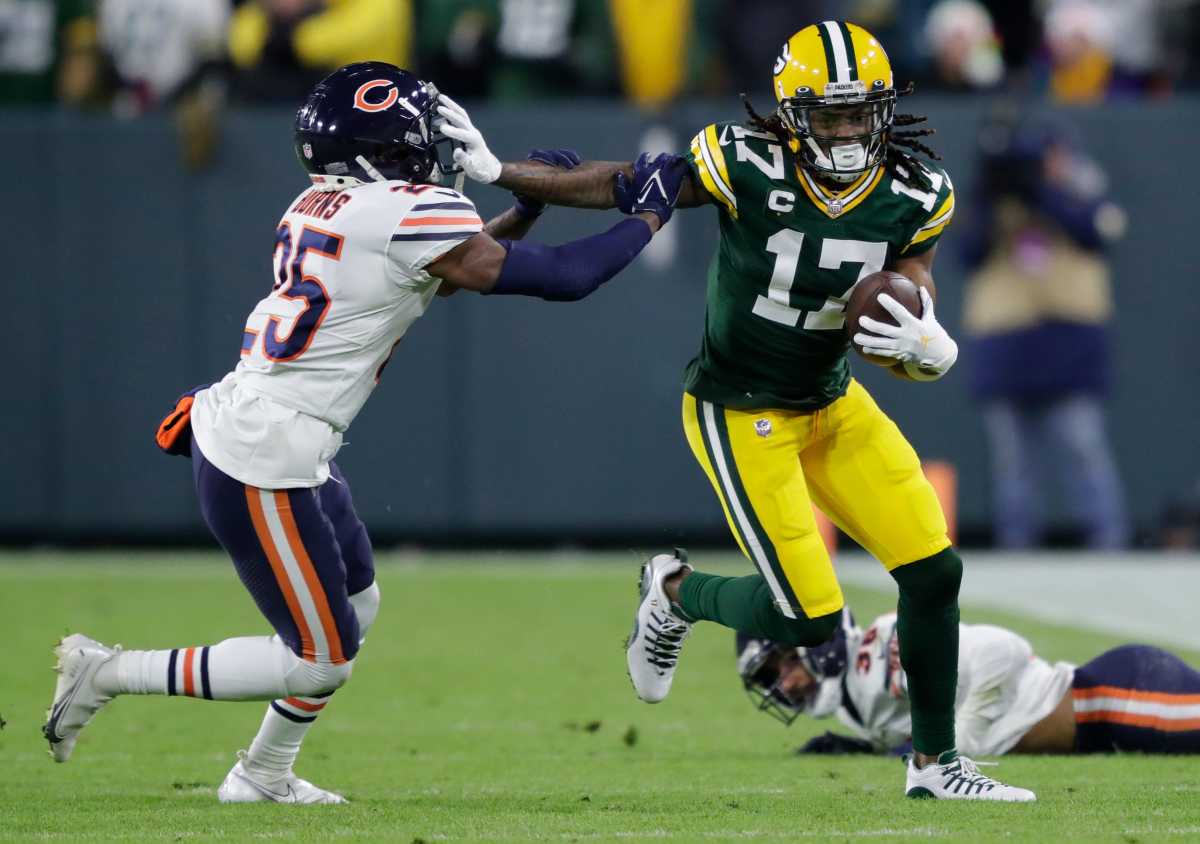
Adams is a face-of-the-franchise type of player. In a perfect world, you want your absolute best players to dominate with production, lead with presence and generally do everything on and off the field the right way. That’s Adams.
Adams set franchise records with 123 receptions for 1,553 yards (12.6 average). Eight of his 11 touchdowns came during the final seven games, when the offense really took off. Everyone in the stadium knew where Aaron Rodgers wanted to fire the football and it usually didn’t matter. Rodgers can make any receiver look good, it’s true, but Adams can make any quarterback look good. When you combine a great quarterback and a great receiver with great chemistry, you get what you saw week after week after week.
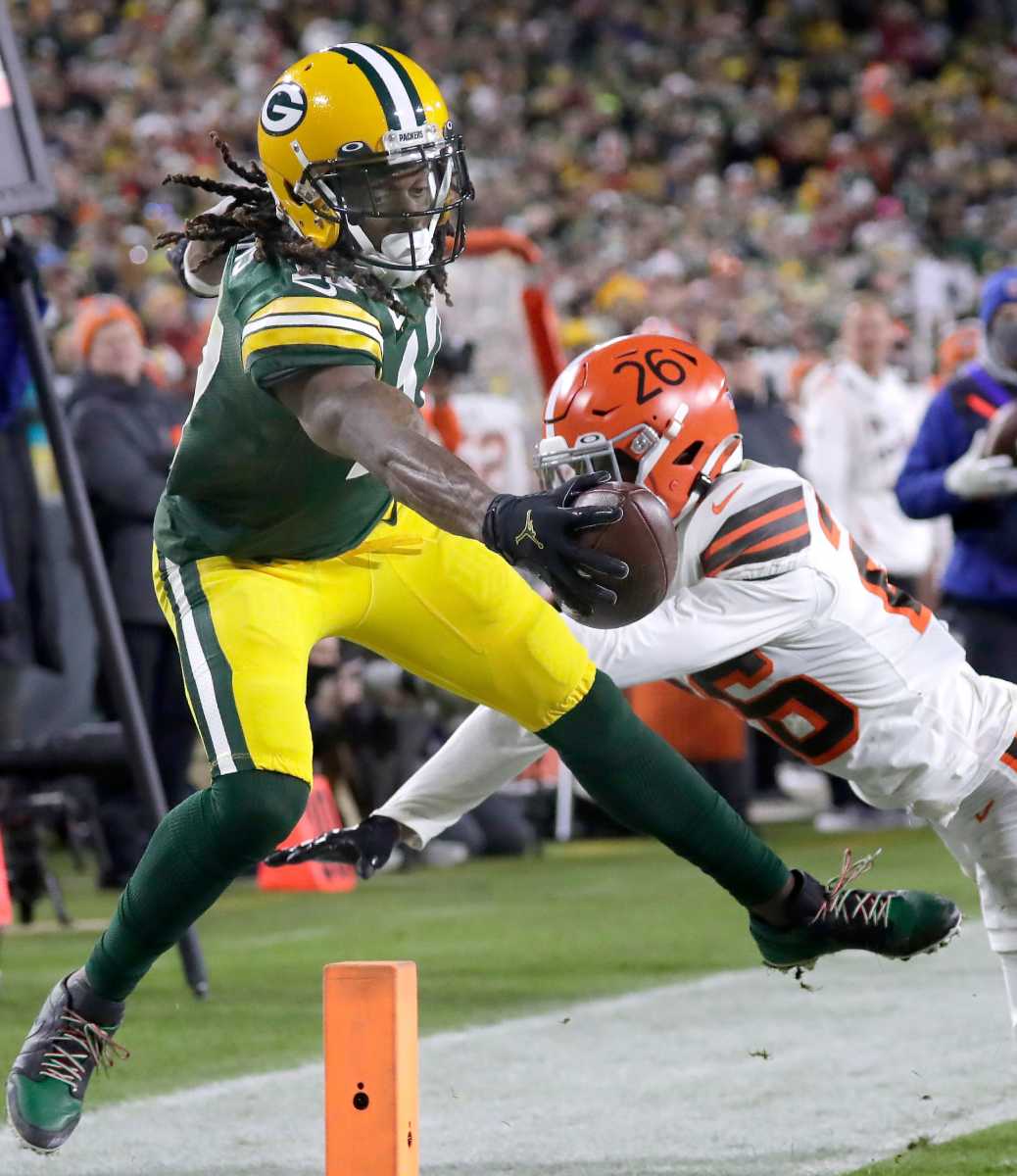
According to Pro Football Focus, 91 receivers were targeted at least 49 times. Adams ranked 13th in catch rate, third in yards per route (2.92), 18th in drop rate (four drops; 3.1 percent) and 15th in passer rating (114.5). Adams wanted to be more of a force after the catch, so he forced 13 missed tackles compared to only four in 2020 and 15 the previous three seasons combined. He also tied for fifth with 12 receptions on passes thrown 20-plus yards downfield.
Adams is scheduled to be a free agent. If he hits the market, he’ll be the No. 1 available player. Arizona’s De’Andre Hopkins is the highest paid receiver with an average salary of $27.25 million. It’s an outlier contract. Tennessee’s Julio Jones is a distant second with a $22 million average, and only Hopkins, Jones, the Chargers’ Keenan Allen and Dallas’ Amari Cooper average $20 million per season. Moreover, Adams will turn 30 on Christmas Eve. Still, it is the priceless connection between Rodgers and the indomitable Adams that makes the offense go.
Grade: A-plus.
Randall Cobb ($2.69 million cap charge; ranking No. 57 among WRs)
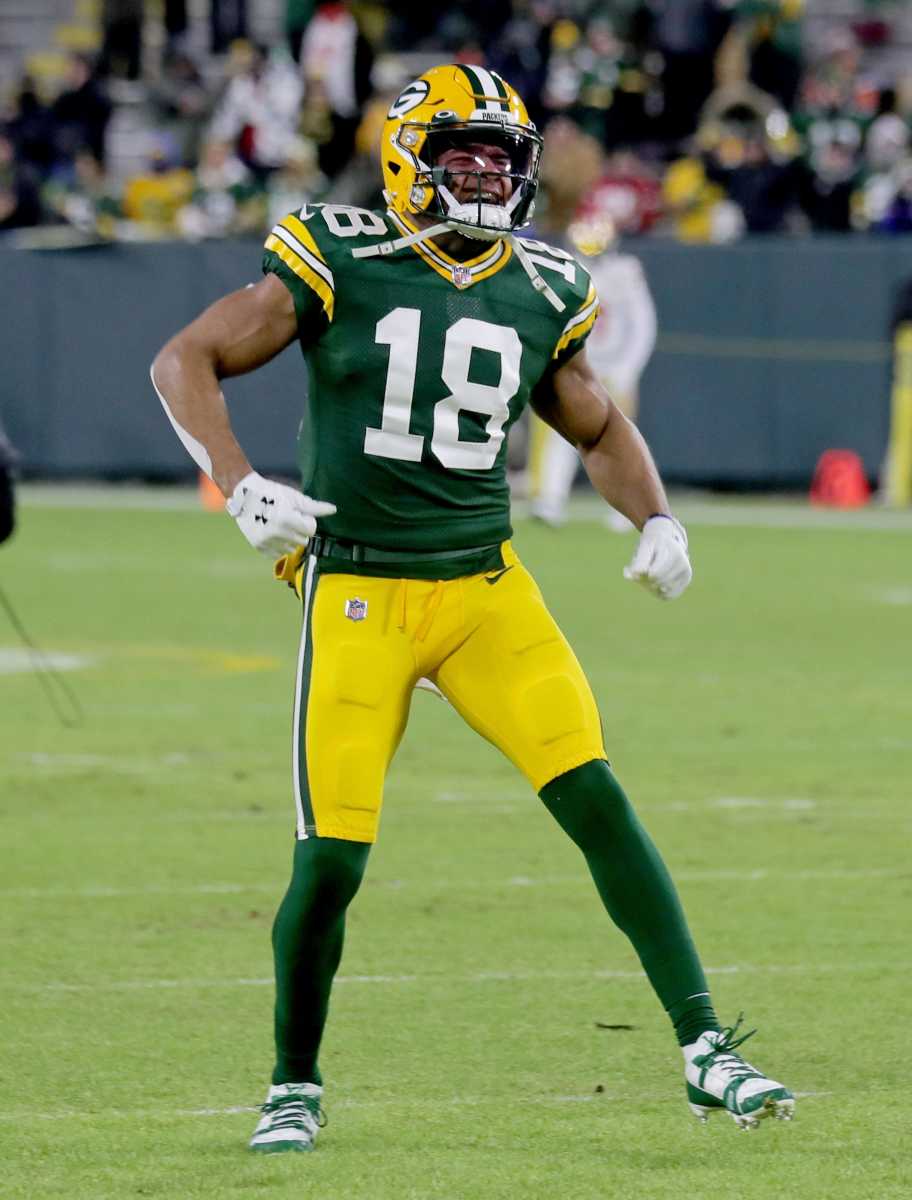
Cobb was brought back at the urging of Aaron Rodgers. He caught 28-of-39 targets (71.8 percent) for 375 yards (13.4 average) and five touchdowns.
In the grand scheme of things, he wasn’t worth the money – and certainly won’t be worth the money next year, when his cap number soars to $9.5 million. But he did deliver when needed and showed he can still play. He had two-touchdown games against Pittsburgh and Arizona, and he was a huge part of the offense in a key win over the Rams before suffering a core-muscle injury that sidelined him for the final six games. He was as fired up as anyone at Lambeau Field when he returned for the playoff game, then inexplicably wasn’t targeted by Rodgers until the final minutes.
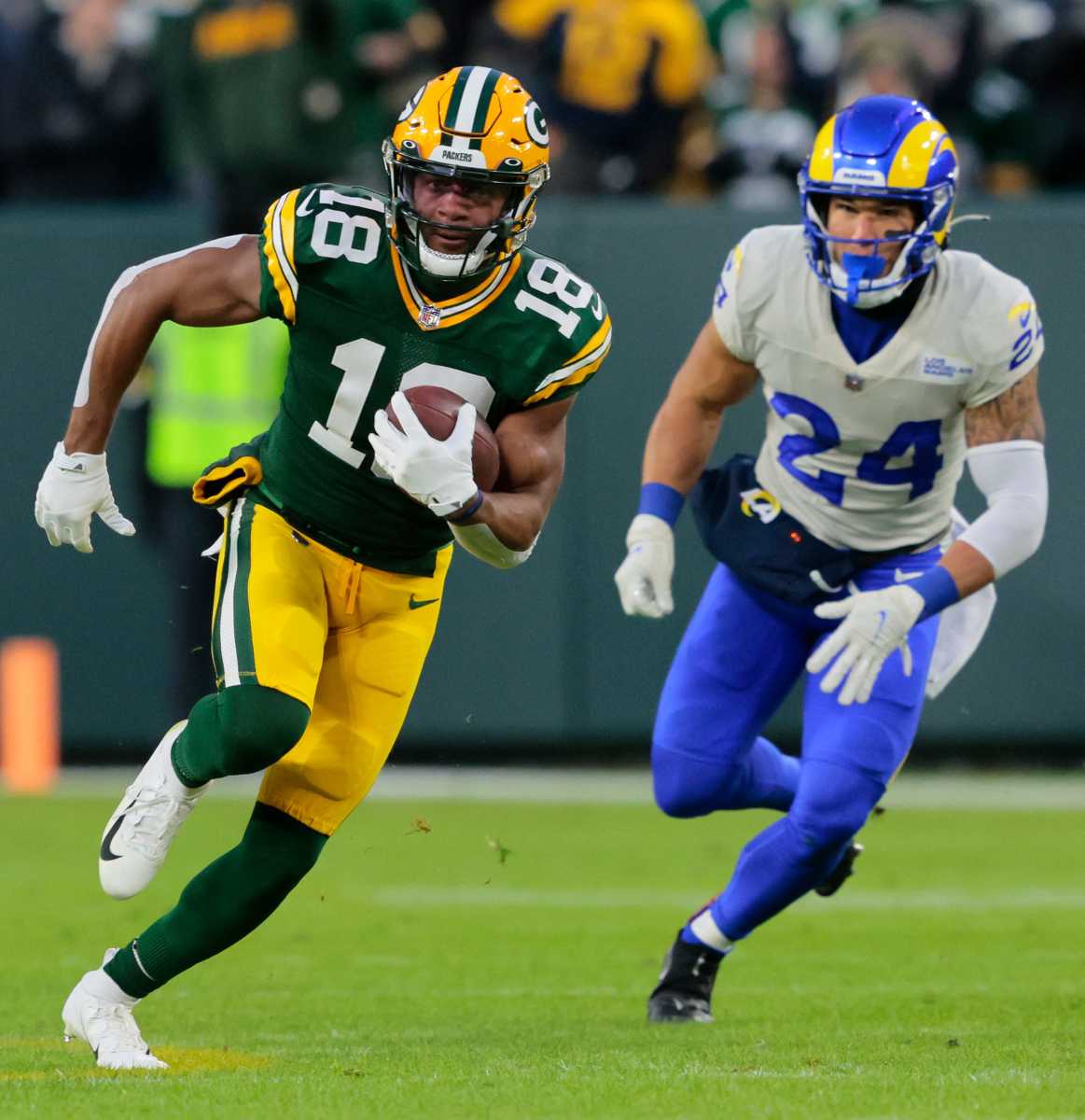
Cobb had zero drops, trailed only Adams in yards per pass route (1.49) and had the best passer rating when targeted (144.2). He’ll turn 32 during training camp. The Packers can save almost $6.75 million by moving on and giving Amari Rodgers a shot in the slot.
Grade: C.
Marquez Valdes-Scantling ($2.24 million cap charge; ranking No. 66 among WRs)
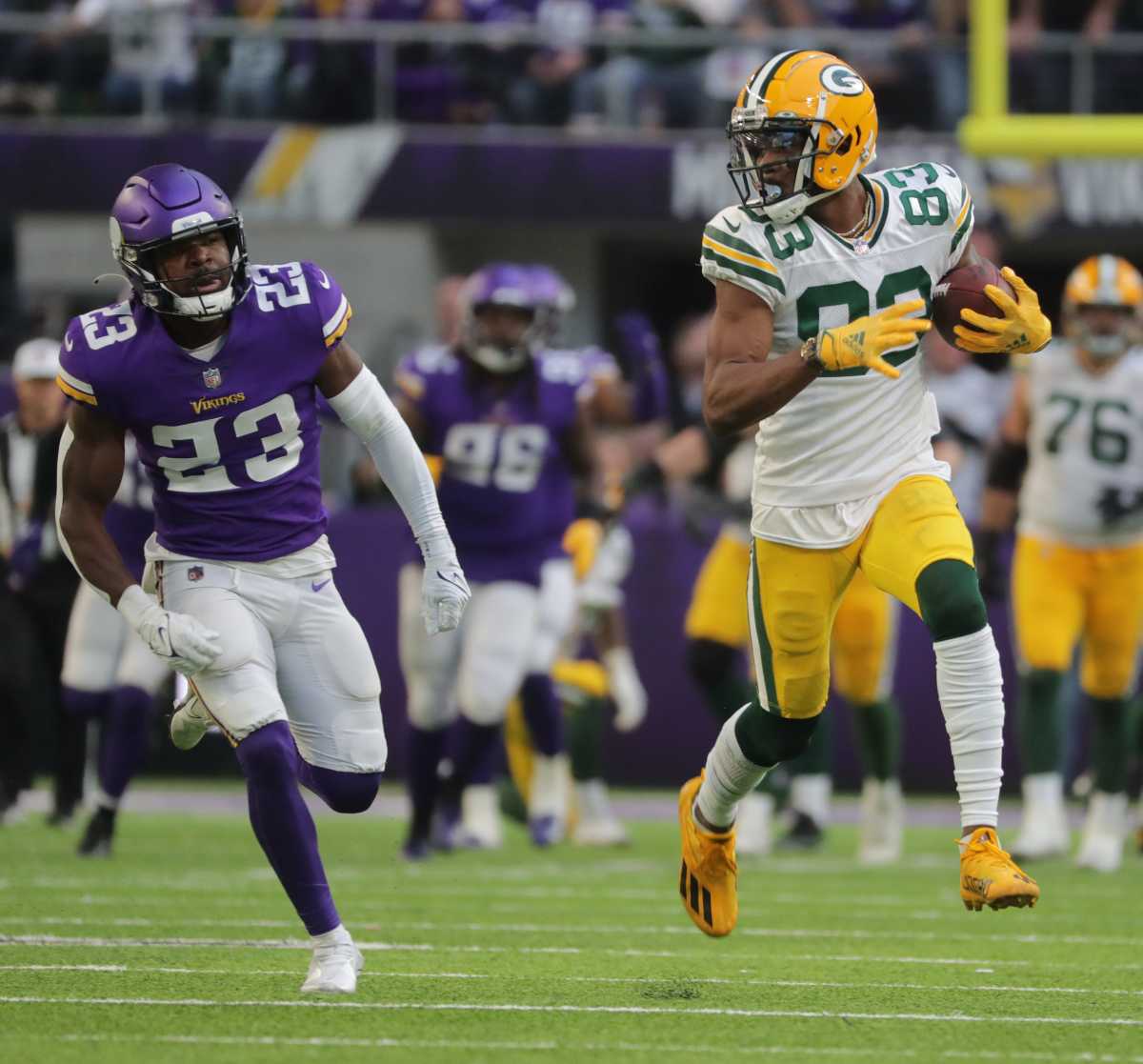
As a fifth-round pick in 2018 who hit certain playing-time requirements, Valdes-Scantling got a nice bump in salary (to $2.183 million) as part of the NFL’s proven-performance escalator. After leading the NFL with a 20.9-yard average in 2020 and a big-time training camp this summer, expectations were high entering the season. Limited to 11 games (seven starts) by injuries, he caught 26-of-55 passes (47.3 percent) for 430 yards (16.5 average) and three touchdowns. According to PFF, he had zero drops but also didn’t break any tackles.
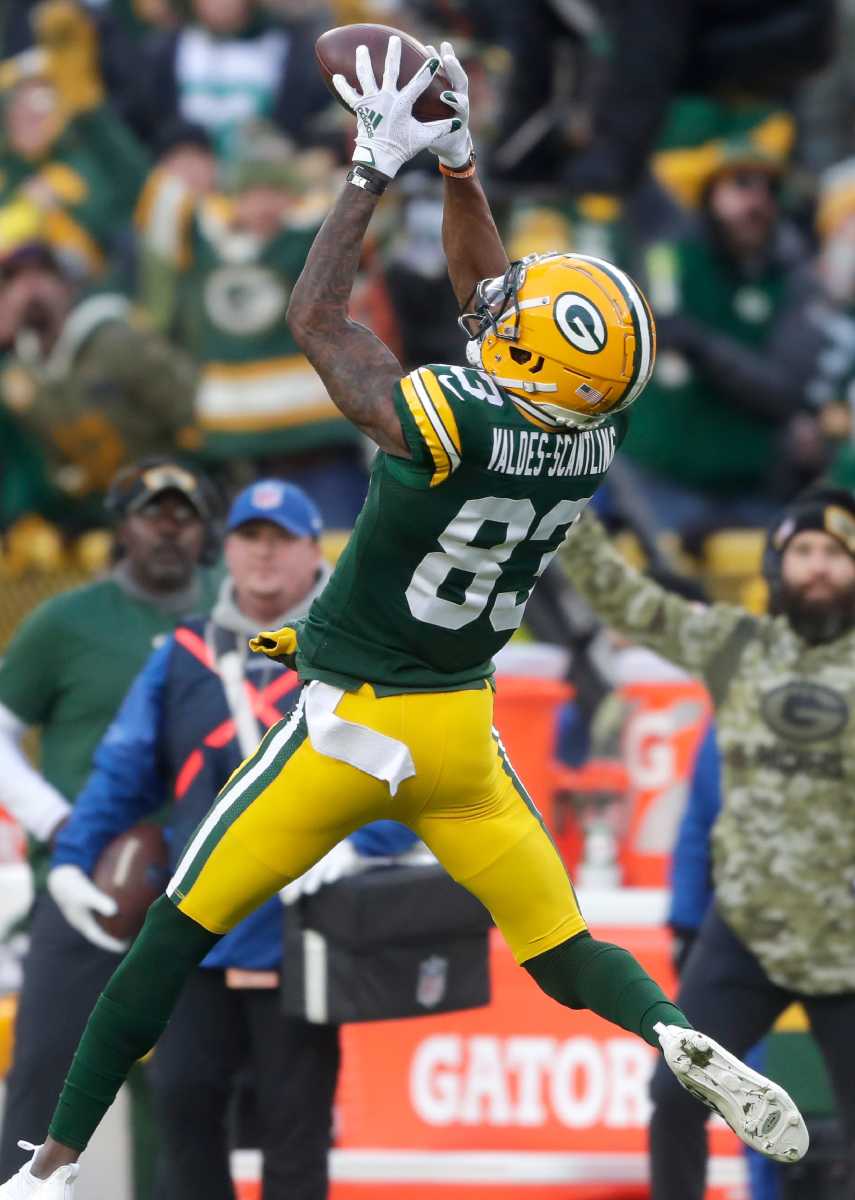
With elite size and speed, Valdes-Scantling’s niche is as a deep threat. On passes thrown 20-plus yards downfield, he caught only 6-of-22 (27.3 percent) with one touchdown this season compared to 9-of-30 (30.0 percent) and five touchdowns last season, according to PFF. Aaron Rodgers never quite got dialed in to MVS’s game-breaking speed.
Valdes-Scantling faces an interesting free agency. He is a proven deep threat. He cut his drops from seven to zero. And, until missing six games this season (plus the playoff game), he had never missed a game in his career. But it’s a what-have-you-done-for-me-lately league. Finishing 83rd among receivers in yards isn't the ideal way in which to hit the open market.
Grade: C-minus.
Amari Rodgers ($890,891 cap charge; ranking No. 127 among WRs)
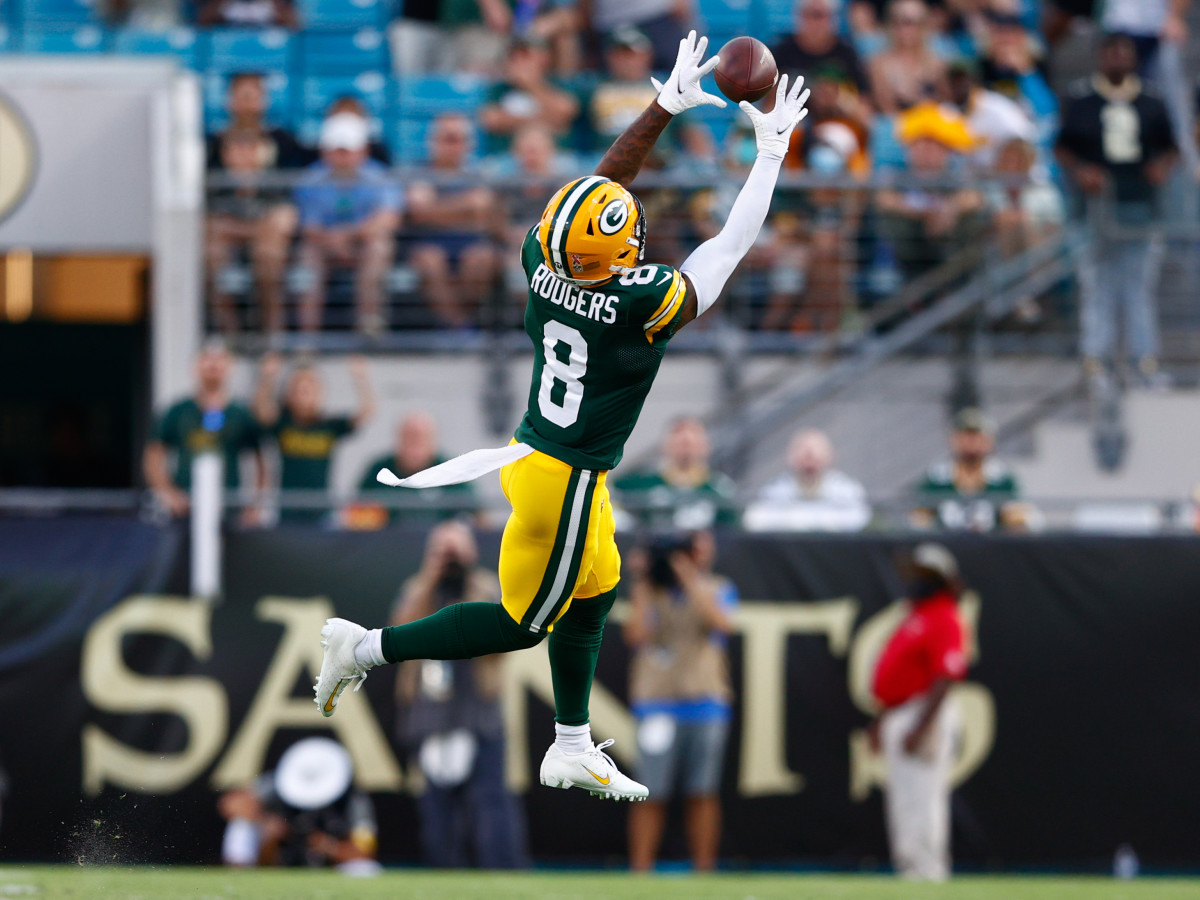
A third-round pick out of Clemson, Rodgers came with some impressive credentials. He was ultra-productive at a national powerhouse, Clemson. His father is Tee Martin, the Tennessee football legend and Ravens receivers coach. He was mentored as a kid by Cobb. His rookie season, though, was not very good.
On offense, he was shoved to the back burner because of the return of Cobb. He caught 4-of-8 passes for 45 yards (11.3 average) with zero touchdowns and one drop. On special teams, he averaged 8.3 yards per punt return and 18.1 yards per kickoff return. On punt returns, simply catching the ball was an adventure at times, though he got better in that phase at the end of the season and wound up with seven returns of 15-plus yards. A make-or-break offseason could await.
Grade: D-minus.
Allen Lazard ($850,000 cap charge; ranking No. 138 among WRs)
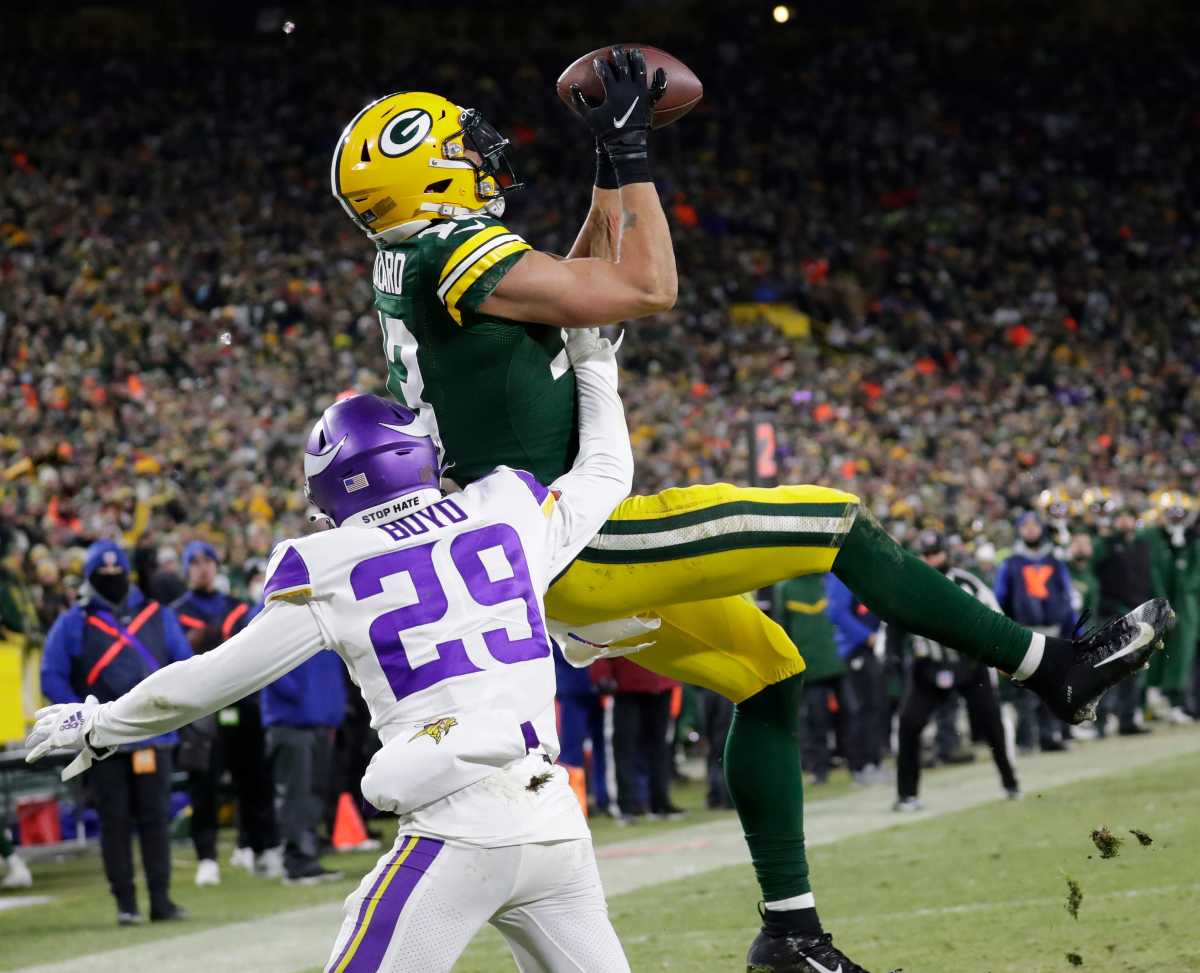
Lazard is coming off the best season of his career. He caught 40-of-60 passes (66.7 percent) for 513 yards (12.8 average) and eight touchdowns. The catches, yards and touchdowns all set career highs. He finished the season with a flourish. In the first 11 games, he had only one game of more than three catches. In the final six games, he had five-plus receptions for 70-plus yards three times. His five touchdown catches over the final five games were surpassed league-wide only by Adams.
Lazard is renowned for doing the dirty work. Defenders are so wary of his blocking that they can get blown by in the deep game. He caught 5-of-10 passes thrown 20-plus yards downfield, according to PFF. That was only one less reception than Valdes-Scantling while getting a dozen fewer deep targets. He did have three drops, giving him a drop rate of 7.0 percent that was the worst among the Big 4 receivers but not all that far off the league median of 5.4 percent.
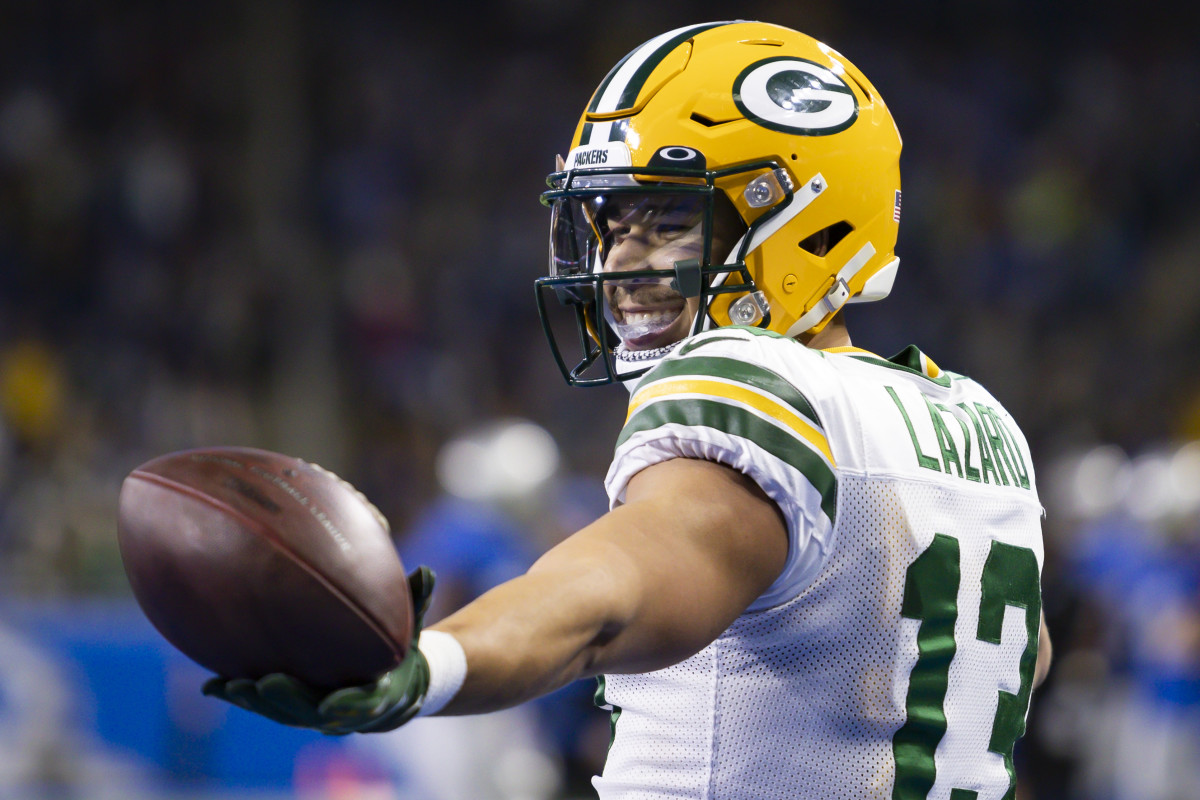
Lazard will be a restricted free agent. He’s been good enough that he could attract interest from other teams. To limit that interest, the Packers could give him the second-round tender, which will be worth almost $4 million. That’s a big chunk of change given the team’s cap problems. The team could do what it did with tight end Robert Tonyan last year, when it gave him that second-round tender, then restructured it with void years to provide cap relief.
Grade: B-plus.
Malik Taylor ($780,000 cap charge; ranking No. 164 among WRs)
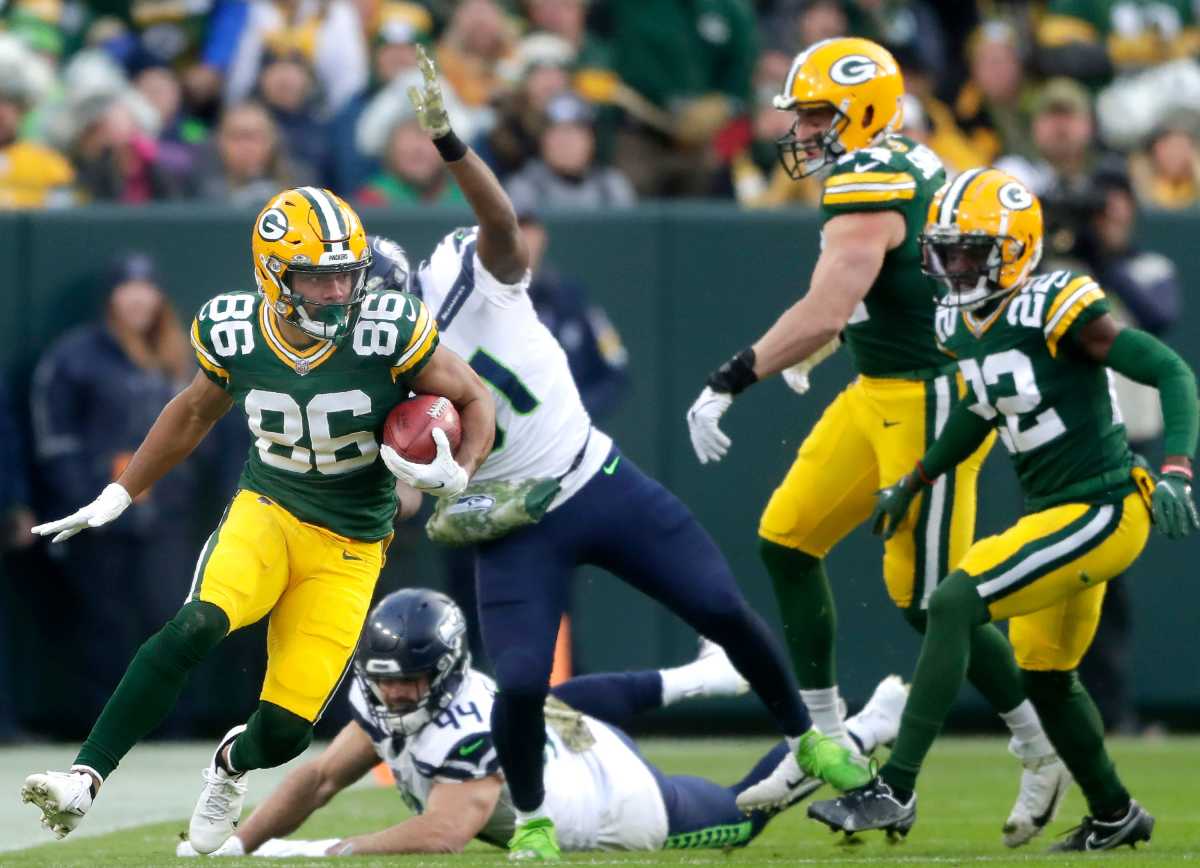
Taylor caught two passes for 14 yards at the end of the 38-3 loss to New Orleans in Week 1. He never saw the ball the rest of the season on offense. Heck, he barely saw the field the rest of the season. In 10 games, he played 32 snaps on offense – 15 in Week 1 and never more than five thereafter. About his only noteworthy play was fumbling a kickoff out of bounds at the 5 in Week 14 against Chicago.
Grade: F.
Equanimeous St. Brown ($613,889 cap charge; ranking No. 191 among WRs)
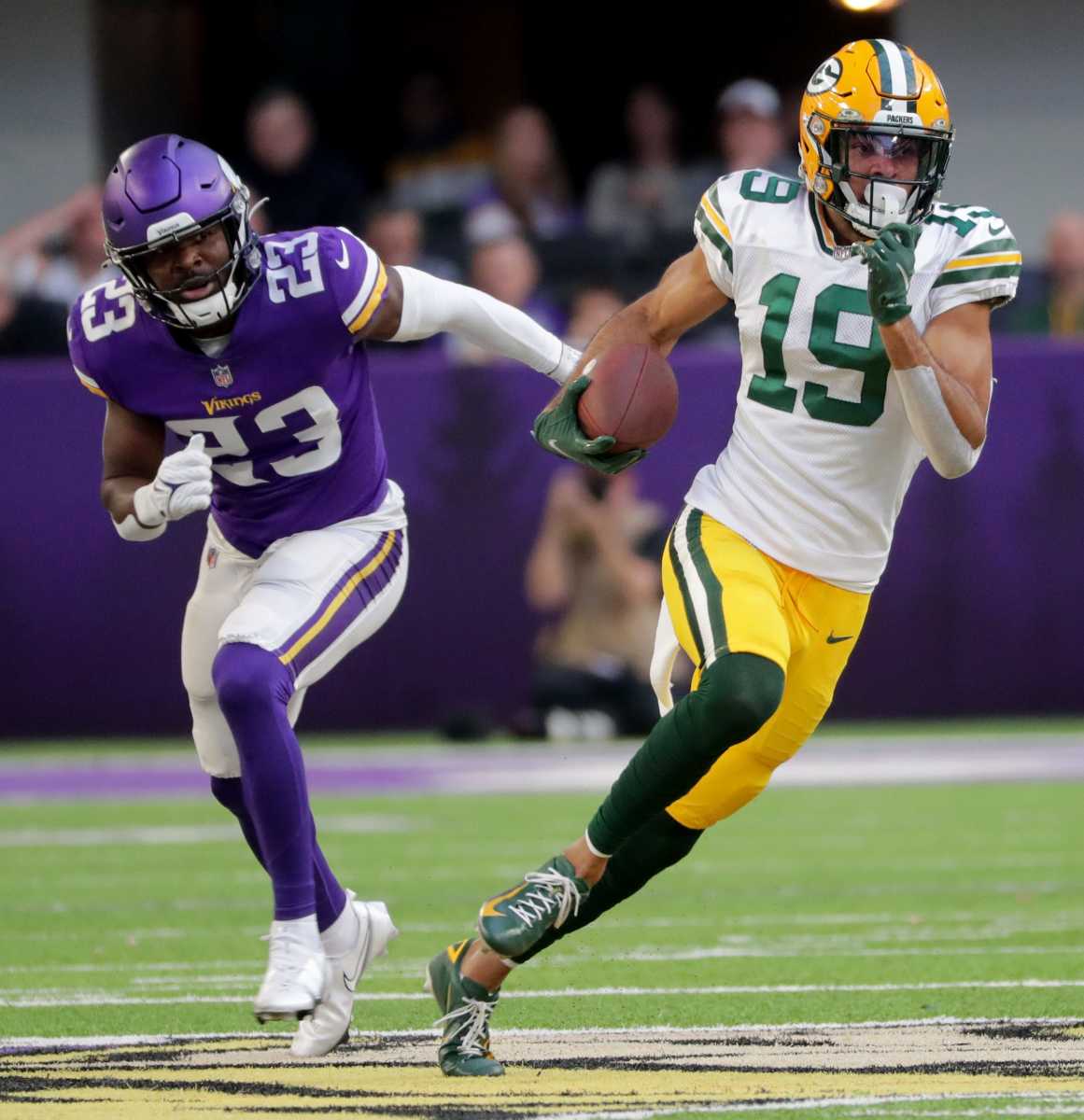
A sixth-round pick in 2018, St. Brown failed to make the roster but wound up playing in 13 games. He caught 9-of-17 passes (52.9 percent) for 98 yards and finished third on the team with seven tackles on special teams. Aaron Rodgers praised St. Brown for his attitude and performance throughout the season but it wasn’t enough to get the ball thrown his direction. He finished last on the team with 0.66 yards per pass route, according to PFF. With that, St. Brown will join a few of his teammates in free agency. On one hand, the Packers might want him back for some stability. On the other hand, he might want a fresh start after not getting many chances following a rookie season of 21 receptions.
Grade: C-minus.
Juwann Winfree ($173,333 cap charge; ranking No. 252 among WRs)
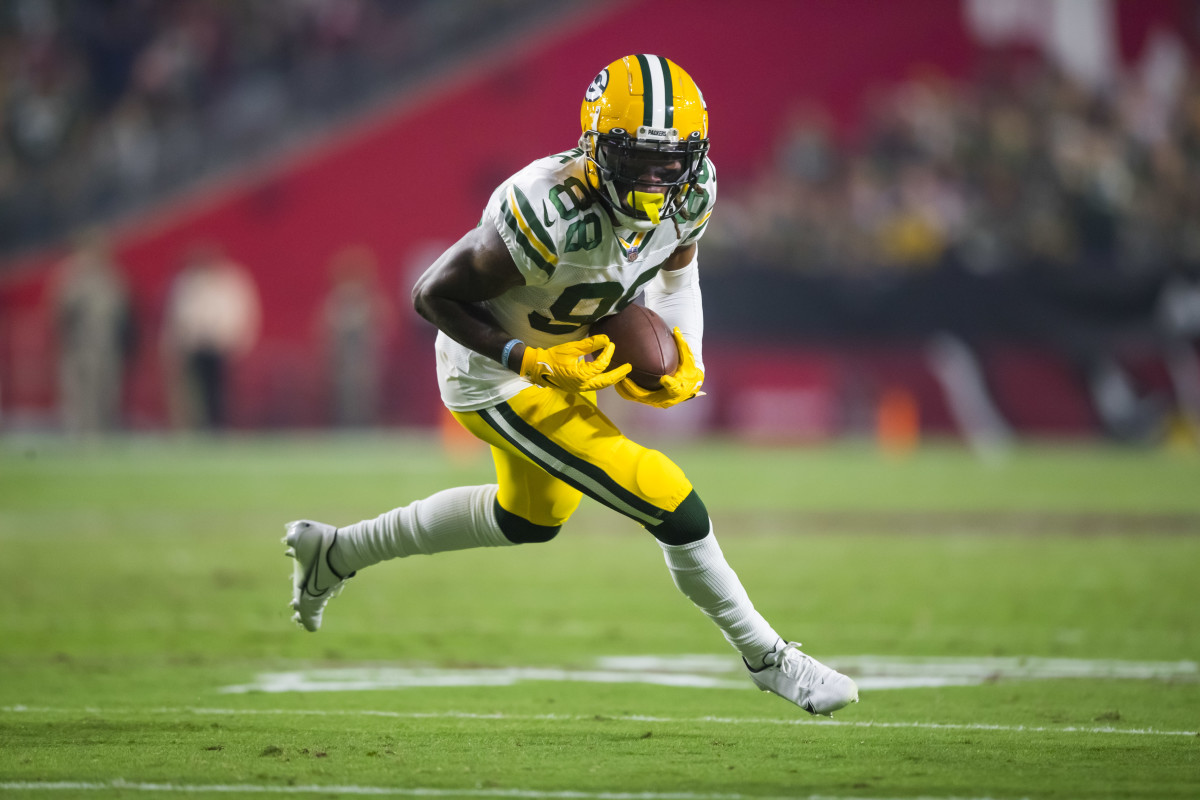
A sixth-round pick by Denver in 2019, Winfree turned heads with a string of excellent practices while the veterans stayed away from the offseason workouts. He caught the first eight passes of his career, which he turned into 58 yards, but fumbled twice. Those were the only fumbles by a Packers receiver on offense the entire season. He also had one of the nine drops charged to Green Bay’s receivers.
Grade: F.
